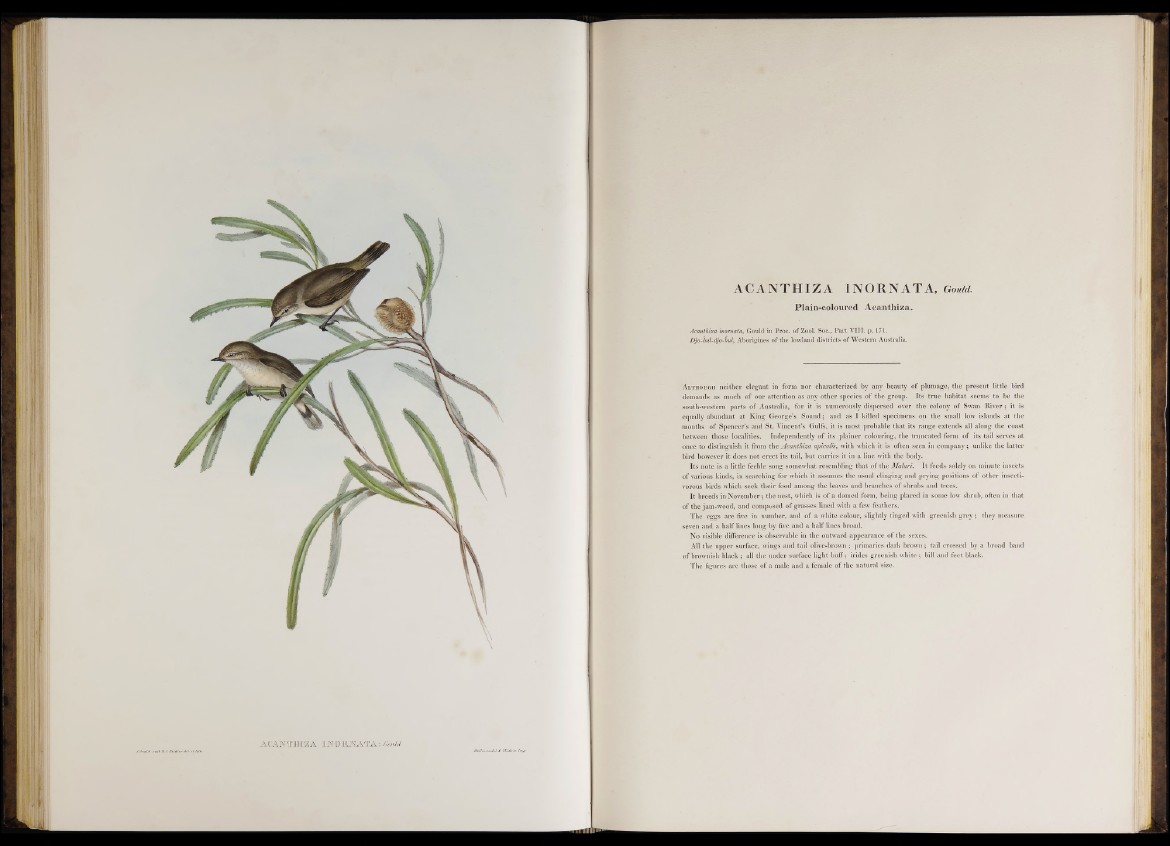
ACANTM25A INOl&KATA: M
AGANTHIZA INORNATA , Gould.
Plaia-coloured Acanthiza.
Acanthiza inomata, Gould in Proc. of Zool. Soc., Part VIII. p. 171.
Djo-lul-djo-lul, Aborigines of the lowland districts of Western Australia.
A lthough neither elegant in form nor characterized by any beauty o f plumage, the present little bird
demands as much o f our attention as any other species of the group. Its true habitat seems to be the
south-western parts of Australia, for it is numerously dispersed over the colony o f Swan River; it is
equally abundant at King George’s Sound 5 and as I killed specimens on the small low islands at the
mouths of Spencer’s and St. Vincent’s Gulfs, it is most probable that its range extends all along the coast
between those localities. Independently o f its plainer colouring, the truncated form o f its tail serves at
once to distinguish it from the Acanthiza apicalis, with which it is often seen in company; unlike the latter
bird however it does not erect its tail, but carries it in a line with the body.
Its note is a little feeble song somewhat resembling that o f the Maluri. It feeds solely on minute insects
of various kinds, in searching for which it assumes the usual clinging and prying positions o f other insectivorous
birds which seek their food among the leaves and branches o f shrubs and trees.
It breeds in November; the nest, which is o f a domed form, being placed in some low shrub, often in that
of the jam-wood, and composed of grasses lined with a few feathers.
The eggs are five in number, and o f a white colour, slightly tinged with greenish g rey ; they measure
seven and a half lines long by five and a half lines broad.
No visible difference is observable in the outward appearance o f the sexes.
All the upper surface, wings and tail olive-brown ; primaries dark brown; tail crossed by a broad band
of brownish black ; all the under surface light buff; irides greenish white ; bill and feet black.
The figures are those of a male and a female o f the natural size.